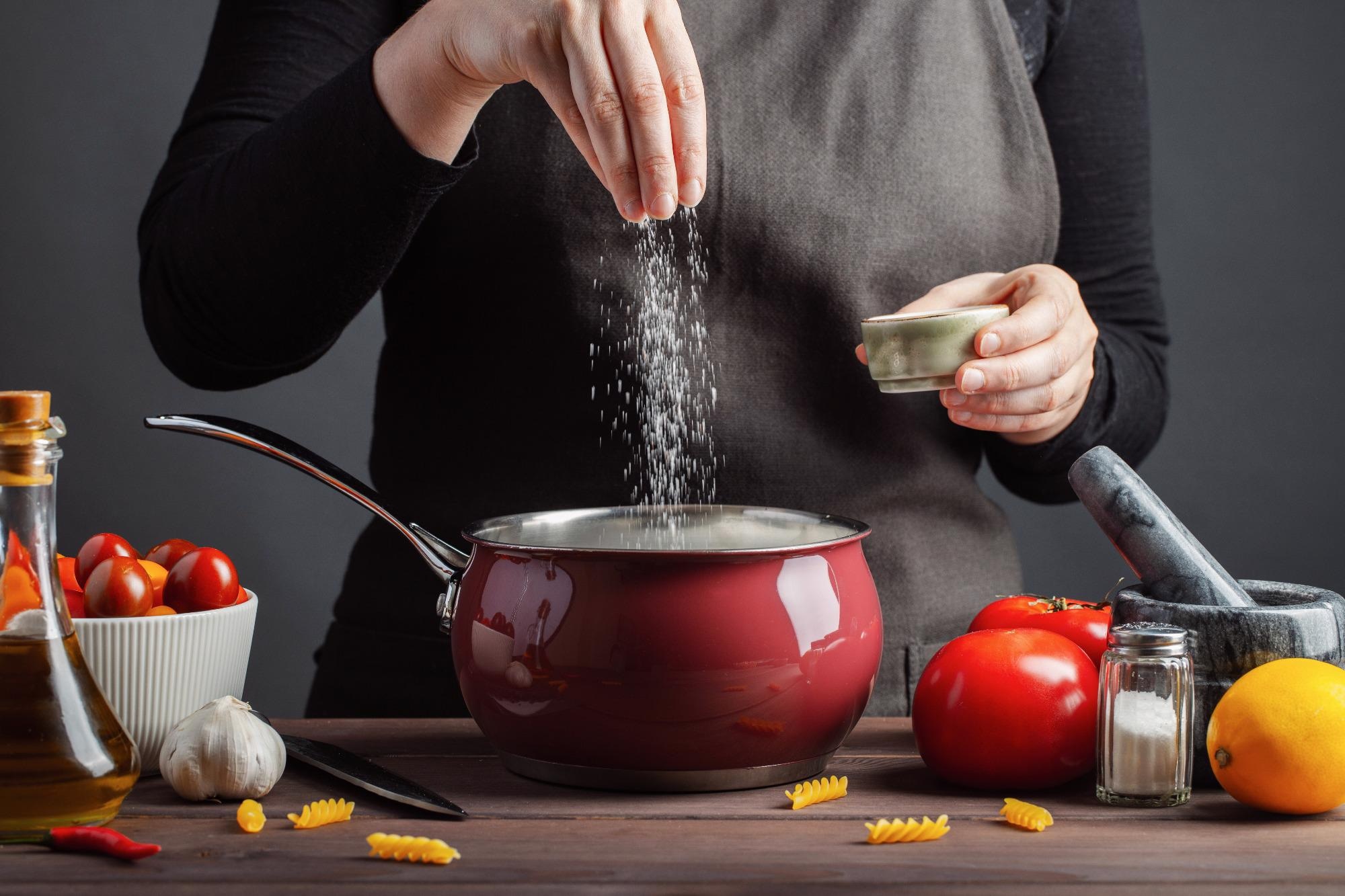Scientists from the University of Cambridge prepared their robot chef to analyze the saltiness of a dish at various stages of the chewing procedure, simulating a similar method in humans, in partnership with domestic appliance manufacturer Beko.

Image Credit: Shutterstock.com/VasiliyBudarin
Their findings could lead to the enhancement of automated or semi-automated meal preparation by assisting robots in learning what tastes good and what does not, thereby improving their cooking skills.
Humans detect a difference in texture and flavor when they chew a meal. Biting into a fresh tomato at the height of summer, for instance, releases juices, and as people chew, saliva and digestive enzymes are released, the impression of the tomato’s flavor changes.
The robot chef, who had previously been programmed to prepare omelets related to human feedback, tasted nine distinct varieties of a simple dish of scrambled eggs and tomatoes at three different phases of the chewing process and generated “taste maps” of the various dishes.
The scientists determined that this “taste as you go” strategy considerably increased the robot’s capacity to judge the saltiness of the dish more rapidly and precisely than other electronic tasting technologies that only test a single homogenized sample. The findings were published in the journal Frontiers in Robotics & AI.
The appearance, smell, texture and temperature of food all influence how people experience taste — saliva created during chewing helps deliver chemical elements in food to taste receptors, usually on the tongue, and signals from taste receptors are transmitted to the brain. People decide whether they like the food or not, once their brains are conscious of the flavor.
Taste is also very subjective: some people prefer spicy foods, while others prefer sweet foods. A successful cook, whether amateur or expert, depends on their sense of taste to balance the different flavors in a dish and produce a well-rounded result.
Most home cooks will be familiar with the concept of tasting as you go—checking a dish throughout the cooking process to check whether the balance of flavors is right. If robots are to be used for certain aspects of food preparation, it’s important that they are able to ‘taste’ what they’re cooking.
Grzegorz Sochacki, Study First Author and PhD Student, Engineering, University of Cambridge
“When we taste, the process of chewing also provides continuous feedback to our brains,” added co-author Dr. Arsen Abdulali, also from the Department of Engineering. “Current methods of electronic testing only take a single snapshot from a homogenized sample, so we wanted to replicate a more realistic process of chewing and tasting in a robotic system, which should result in a tastier end product.”
The scientists are part of Cambridge’s Bio-Inspired Robotics Laboratory, which is led by Professor Fumiya Iida of the Department of Engineering and focuses on teaching robots to solve issues that humans find simple but are difficult for robots to solve. Cooking is one of these tasks: previous testing with their robot ‘chef’ resulted in a satisfactory omelet utilizing human taster feedback.
We needed something cheap, small and fast to add to our robot so it could do the tasting: it needed to be cheap enough to use in a kitchen, small enough for a robot, and fast enough to use while cooking.
Grzegorz Sochacki, Study First Author and PhD Student, Engineering, University of Cambridge
The scientists coupled a conductance probe, which works as a salinity sensor, to a robot arm to mimic the human process of chewing and tasting in their robot chef. They made scrambled eggs and tomatoes with different amounts of tomatoes and salt in each dish.
The robot “tasted” the plates in a grid-like pattern with the probe, producing a reading in just a few seconds.
To simulate the textural change caused by chewing, the scientists blended the egg mixture and had the robot test the plate once again. Taste maps of each meal were created using different readings at various points of “chewing.”
Their findings revealed that robots are far better at assessing saltiness than other electronic tasting methods, which are generally time-consuming and only deliver a single reading.
While the researchers’ method is still a proof of concept, they believe that by mimicking human chewing and tasting processes, robots will someday be able to manufacture food that people will love and that can be customized to suit individual tastes.
When a robot is learning how to cook, like any other cook, it needs indications of how well it did. We want the robots to understand the concept of taste, which will make them better cooks. In our experiment, the robot can ‘see’ the difference in the food as it’s chewed, which improves its ability to taste.
Dr. Arsen Abdulali, Study Co-Author, Engineering, University of Cambridge
“Beko has a vision to bring robots to the home environment which are safe and easy to use,” said Dr. Muhammad W. Chughtai, Senior Scientist at Beko plc. “We believe that the development of robotic chefs will play a major role in busy households and assisted living homes in the future. This result is a leap forward in robotic cooking, and by using machine and deep learning algorithms, mastication will help robot chefs adjust taste for different dishes and users.”
The scientists hope to enhance the robot chef in the future so that it can taste a variety of foods and boost sensory capabilities so that it can detect sweet or greasy foods, for example.
Beko plc and the Engineering and Physical Sciences Research Council (EPSRC), which is part of UK Research and Innovation, contributed to the study (UKRI). Fumiya Iida is a Corpus Christi College Fellow at Cambridge.
Taste of the future: robot chef learns to ‘taste as you go’
Video Credit: University of Cambridge.
Journal Reference:
Sochacki, G., et al. (2022) Mastication-Enhanced Taste-Based Classification of Multi-Ingredient Dishes for Robotic Cooking. Frontiers in Robotics & AI. doi.org/10.3389/frobt.2022.886074.